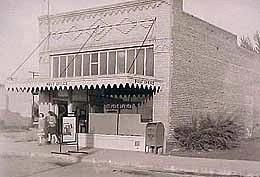On September 20, 1909, the Yakima Valley settlement of Grandview is certified as a town of the fourth class. The certification by the Yakima County Auditor comes after an election held on September 18, 1909. In 1944, Grandview will become a town of the third class after the population grows to about 1,800 people. With an economy largely led by agriculture, farming, and food processing, Grandview will reach 10,862 residents by 2010.
Scenic Vista
Two separate groups of settlers originally populated the area around Grandview. In 1906, the two groups came together to form the town site, taking the name from scouts for the Oregon-Washington Railroad and Navigation Company who had admired the vista in the area. When the railroad began construction for a line through town in 1907, residents decided to incorporate before the line's completion in 1911.
On September 18, 1909, 40 people cast their vote on the issue of Grandview's incorporation. Thirty-seven voted for it, with just three holding out against. Also voted into office on election day were Grandview's first mayor, John Monroe, and treasurer A. W. Hawn. D. O. Robertson, C. R. Moulten, W. F. Elser, A. E. Fisk, and F. G. Bennett were elected to Grandview's new city council. Just a week after the incorporation was certified, appointments were made in the city: G. D. Snowden became the first city clerk, Ed Dawson was named marshal, and Ward Wheeler was appointed city attorney.
Even before incorporation, the Grandview area, supplied by the Sunnyside Canal and aided by the federal Reclamation Act of 1902 that funded irrigation systems, had developed an agricultural economy based on the many fruits and vegetables grown in the Yakima Valley. In the century after it became a city, agriculture remained the center of Grandview's economy, with food processing plants also becoming a staple industry in later years. In 2010, nearly 80 percent of the city's 10,862 residents were Latino.

